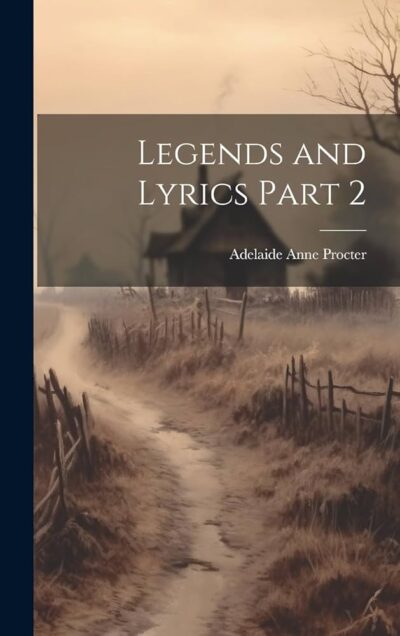54 Results in the "Non-Fiction" category
Biography & Memoir (443)
Books Like (8)
Business & Finance (26)
Children’s Fiction (203)
Dystopian (16)
Education & Learning (26)
Fantasy (1248)
fashion (1)
Fiction (4538)
Health & Wellness (21)
Historical Fiction (504)
Horror (159)
Literary Fiction (788)
Novel (229)
Others (106)
Philosophy (128)
Poetry (208)
Politics & History (131)
Posts (66)
Psychology (46)
Religion & Spirituality (1)
Romance Novel (569)
Science & Technology (82)
Science Fiction (220)
Self-Help & Personal Development (99)
Thriller / Mystery (858)
Travel & Adventure (2)
True Crime (55)
view (96)
Young Adult (318)
-
Chapter
VERSE: Beyond
 Beyond opens with a deliberate stripping away of the world’s temporary crowns—pride, status, intellect, wealth, and control. These may dazzle while we walk the earth, but their light fades swiftly in the presence of eternity. The poem does not rage against these constructs but gently reveals their inability to survive in the atmosphere of Heaven. There, nothing hollow can endure. Earthly accomplishments, impressive though they seem, are shadows when compared to the enduring flame of true love. It is…
Beyond opens with a deliberate stripping away of the world’s temporary crowns—pride, status, intellect, wealth, and control. These may dazzle while we walk the earth, but their light fades swiftly in the presence of eternity. The poem does not rage against these constructs but gently reveals their inability to survive in the atmosphere of Heaven. There, nothing hollow can endure. Earthly accomplishments, impressive though they seem, are shadows when compared to the enduring flame of true love. It is…-
56.4 K • Ongoing
-
-
Chapter
VERSE: A Legend of Provence
 A Legend of Provence begins in a quiet moment of reflection, where a simple portrait stirs a deep story of loss and redemption. The image—a sorrowful nun with downcast eyes—serves not just as a symbol of piety, but as the gateway to a narrative set in the sun-kissed fields of southern France. The convent known as Our Lady of the Hawthorns stood like a sanctuary of compassion, offering care to the sick, peace to the weary, and a home to many who had nowhere else to turn. Within its tranquil walls lived…
A Legend of Provence begins in a quiet moment of reflection, where a simple portrait stirs a deep story of loss and redemption. The image—a sorrowful nun with downcast eyes—serves not just as a symbol of piety, but as the gateway to a narrative set in the sun-kissed fields of southern France. The convent known as Our Lady of the Hawthorns stood like a sanctuary of compassion, offering care to the sick, peace to the weary, and a home to many who had nowhere else to turn. Within its tranquil walls lived…-
56.4 K • Ongoing
-
-
 Legends and Lyrics: Second Series is a collection of poems by Adelaide Anne Procter, published in 1861. It features reflective and lyrical works exploring themes of faith, love, compassion, and social justice, showcasing Procter’s delicate and heartfelt poetic style.
Legends and Lyrics: Second Series is a collection of poems by Adelaide Anne Procter, published in 1861. It features reflective and lyrical works exploring themes of faith, love, compassion, and social justice, showcasing Procter’s delicate and heartfelt poetic style.-
4.0 K • Nov 8, '24
-
4.1 K • Nov 8, '24
-
4.4 K • Nov 8, '24
-
-
Chapter
Trailers
 Trailers mark an intriguing yet underutilized aspect of internet data handling. In a networked system, as data travels between applications and devices, it's divided into manageable chunks, known as packets. Each packet contains a header at the beginning, which includes addressing and routing information essential for delivery. Trailers, in theory, were designed to supplement this by placing additional control information at the end of packets. Their role was to enhance data handling efficiency by…
Trailers mark an intriguing yet underutilized aspect of internet data handling. In a networked system, as data travels between applications and devices, it's divided into manageable chunks, known as packets. Each packet contains a header at the beginning, which includes addressing and routing information essential for delivery. Trailers, in theory, were designed to supplement this by placing additional control information at the end of packets. Their role was to enhance data handling efficiency by…-
34.4 K • Ongoing
-
-
Chapter
“Names”
 Names shape the very foundation of human interaction with the internet. Unlike numerical IP addresses, which are hard to memorize or type accurately, symbolic names offer a friendlier interface for everyday users. Early on, these names were manually cataloged in a centralized host file maintained by the Network Information Center (NIC), a method that worked only while the number of hosts remained manageable. As network participation expanded, especially with the inclusion of smaller systems and personal…
Names shape the very foundation of human interaction with the internet. Unlike numerical IP addresses, which are hard to memorize or type accurately, symbolic names offer a friendlier interface for everyday users. Early on, these names were manually cataloged in a centralized host file maintained by the Network Information Center (NIC), a method that worked only while the number of hosts remained manageable. As network participation expanded, especially with the inclusion of smaller systems and personal…-
34.4 K • Ongoing
-
-
Chapter
Gated
 Gated represents a key shift in internet routing, designed to address the fragmentation created by disparate routing protocols. As the early internet evolved, multiple networks operated with their own routing systems—such as RIP for campus environments and Hello for NSFnet—each optimized for localized needs but ill-equipped to scale seamlessly across a broader architecture. To bridge these inconsistencies, Gated (short for “Gateway Daemon”) was developed as a flexible routing software capable of…
Gated represents a key shift in internet routing, designed to address the fragmentation created by disparate routing protocols. As the early internet evolved, multiple networks operated with their own routing systems—such as RIP for campus environments and Hello for NSFnet—each optimized for localized needs but ill-equipped to scale seamlessly across a broader architecture. To bridge these inconsistencies, Gated (short for “Gateway Daemon”) was developed as a flexible routing software capable of…-
34.4 K • Ongoing
-
-
Chapter
Trust Issues
 Trust Issues in the internet’s operational framework have grown more pronounced as the network has expanded beyond its original controlled environment. Initially, under DARPA’s stewardship, the network’s integrity depended on mutual trust among a small, centralized group of gateways. These systems shared routing information freely, under the assumption that all parties were both competent and cooperative. But with the emergence of independent administrative domains and multiple wide area networks,…
Trust Issues in the internet’s operational framework have grown more pronounced as the network has expanded beyond its original controlled environment. Initially, under DARPA’s stewardship, the network’s integrity depended on mutual trust among a small, centralized group of gateways. These systems shared routing information freely, under the assumption that all parties were both competent and cooperative. But with the emergence of independent administrative domains and multiple wide area networks,…-
34.4 K • Ongoing
-
-
Chapter
Address Allocation
 In this chapter titled "Address Allocation," the focus lies on understanding the foundational protocols and practical methodologies used for distributing internet messages within a campus environment, as well as the crucial procedures involved in assigning and managing IP addresses that allow a local network to interface with the global internet. These concepts form the bedrock of internet connectivity in institutional settings, where both communication efficiency and network scalability are…
In this chapter titled "Address Allocation," the focus lies on understanding the foundational protocols and practical methodologies used for distributing internet messages within a campus environment, as well as the crucial procedures involved in assigning and managing IP addresses that allow a local network to interface with the global internet. These concepts form the bedrock of internet connectivity in institutional settings, where both communication efficiency and network scalability are…-
34.4 K • Ongoing
-
-
Chapter
Operating the Internet
 Operating the Internet served as a fundamental experience in the early digital age, where users engaged with systems like BSD to access crucial documents. Unlike today’s browser-based ease, interactions were reliant on terminal commands and a structured understanding of protocols like Telnet and FTP. Retrieving a file such as NETINFO:NUG.DOC, known as The Users Guide to the ARPAnet, involved connecting to servers like sri-nic.arpa via telnet before transitioning into an FTP session for downloading the…
Operating the Internet served as a fundamental experience in the early digital age, where users engaged with systems like BSD to access crucial documents. Unlike today’s browser-based ease, interactions were reliant on terminal commands and a structured understanding of protocols like Telnet and FTP. Retrieving a file such as NETINFO:NUG.DOC, known as The Users Guide to the ARPAnet, involved connecting to servers like sri-nic.arpa via telnet before transitioning into an FTP session for downloading the…-
34.4 K • Ongoing
-
-
Chapter
RFCs
 RFCs serve as the architectural blueprints of the internet, shaping the way systems communicate and evolve. Initially, they were simple memos exchanged by a tight-knit group of researchers. Today, they form a globally recognized documentation system that governs internet protocols, innovations, and standards. Every protocol that allows your browser to talk to a website or your email client to fetch messages is based on one or more of these documents. Their legacy lies not just in what they define, but how…
RFCs serve as the architectural blueprints of the internet, shaping the way systems communicate and evolve. Initially, they were simple memos exchanged by a tight-knit group of researchers. Today, they form a globally recognized documentation system that governs internet protocols, innovations, and standards. Every protocol that allows your browser to talk to a website or your email client to fetch messages is based on one or more of these documents. Their legacy lies not just in what they define, but how…-
34.4 K • Ongoing
-
- Previous 1 … 103 104 105 … 133 Next
